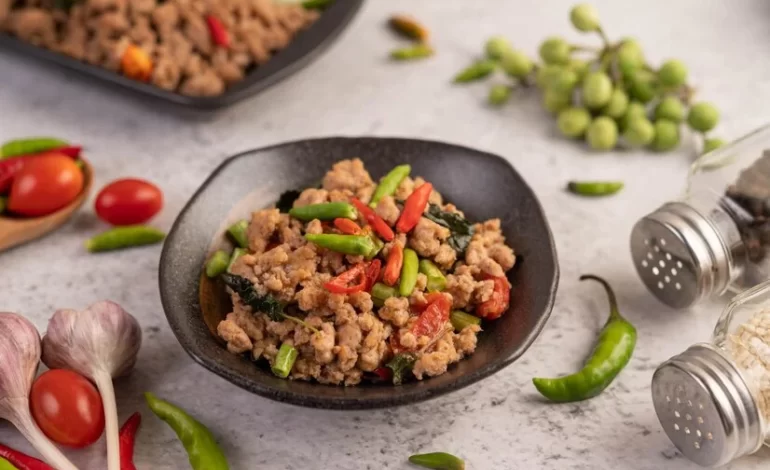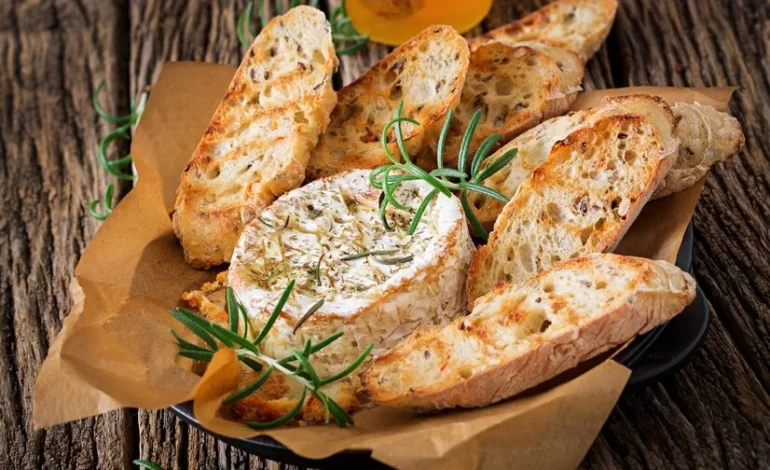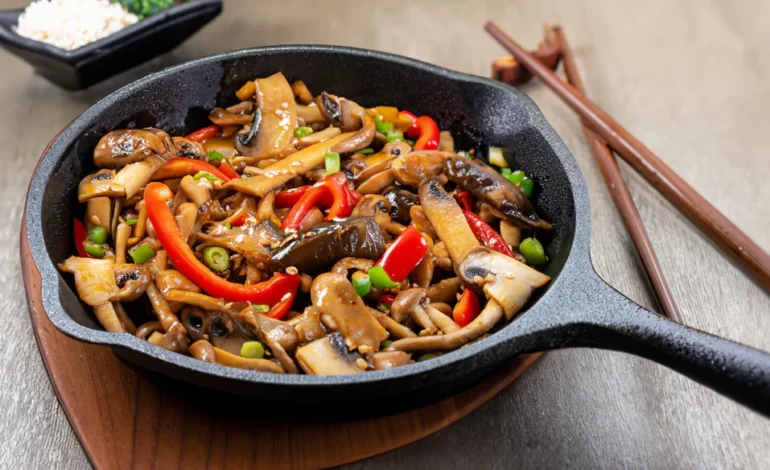
Choko Recipes Mouthwatering : Your Culinary Creativity
Choko is a vegetable that belongs to the gourd family and is characterized by its vibrant green color and pear-like shape. It offers a mild and delicious taste, making it a fantastic addition to both savory and sweet dishes. Its versatility stems from its ability to be cooked in various ways, including boiling, steaming, stir-frying, and baking. Choko can be used in salads, soups, stews, curries, and even desserts, making it an incredibly versatile ingredient for creative culinary exploration. In this blog, we delve into the brief explanation of Choko Recipes.
History and Origin of Choko
The history of choko traces back to Mesoamerica, where it was cultivated by ancient civilizations such as the Aztecs and Mayans. It is believed that choko originated in Mexico and gradually spread to other parts of the world through explorations and trade. Over time, choko found its way into different cuisines, adapting to local tastes and culinary traditions.
Importance of Choko in Different Cuisines
Choko holds a significant place in the culinary traditions of various cultures worldwide. In Latin American cuisine, it is commonly used in dishes like chayote relleno (stuffed choko), chayote salad, and chayote soup. In Asian cuisines, choko is featured in stir-fries, curries, and hotpots, adding a delightful crunch and subtle sweetness to the dishes. Choko has also gained popularity in Mediterranean and Caribbean cuisines, where it is used in salads, side dishes, and even desserts. Its adaptability and unique flavor profile have made it an essential ingredient in diverse culinary landscapes.
Health Benefits of Choko Recipes
Unlocking the Nutritional Powerhouse: Choko’s Health Benefits
Choko not only adds a delightful taste and texture to your meals but is also a nutritional powerhouse packed with essential vitamins, minerals, and fiber. Let’s explore the incredible health benefits that choko offers.

Nutritional Profile of Choko
Choko is a low-calorie vegetable that is rich in nutrients. It is an excellent source of vitamin C, providing a significant portion of your daily requirement. Vitamin C is known for its immune-boosting properties and its role in collagen synthesis, promoting healthy skin and tissue repair. Choko also contains vitamin K, which is essential for blood clotting and bone health, as well as vitamins B6 and folate, which are crucial for energy production and cell development.
High Fiber Content and Its Role in Digestion
One of the standout features of choko is its high fiber content. Fiber plays a vital role in maintaining a healthy digestive system. It adds bulk to the stool, promoting regular bowel movements and preventing constipation. Additionally, a diet rich in fiber can help regulate blood sugar levels, lower cholesterol levels, and promote a feeling of fullness, aiding in weight management.
Choko is a Source of Essential Vitamins and Minerals
In addition to vitamin C and vitamin K, Choko contains a range of essential minerals that are important for overall health. These include potassium, magnesium, and manganese. Potassium is crucial for maintaining healthy blood pressure levels, while magnesium supports bone health, muscle function, and energy production. Manganese plays a role in the metabolism of nutrients and the formation of connective tissues.
Antioxidant Properties and Their Impact on Overall Health
Choko is rich in antioxidants, which are compounds that help protect the body against damage from harmful free radicals. The antioxidants found in choko, such as vitamin C and various phytochemicals, help neutralize free radicals, reducing the risk of chronic diseases like heart disease, cancer, and age-related macular degeneration. Including choko in your diet can contribute to overall well-being and support a healthy lifestyle.
Getting Started: Choko Selection and Preparation
Unlocking the Secrets to Perfectly Selecting and Preparing Choko Recipes
Before diving into the world of tantalizing choko recipes, it’s essential to know how to select and prepare this versatile ingredient. In this section, we will guide you through the process of choosing the perfect Choko and provide valuable tips for ensuring the best texture and flavor in your culinary creations through Choko Recipes.
Choosing the Perfect Choko
- When selecting choko at the market, there are a few factors to consider to ensure you pick the best ones for your recipes.
- Look for Chokos that have a vibrant green color and a firm texture. Avoid Chokos with discoloration, bruises, or signs of softness.
- Size does matter! Opt for medium-sized Chokos, as they tend to have a better flavor and texture compared to larger ones.
- Consider the weight of the choko. A heavier choko indicates that it is juicier and more likely to be ripe.
Factors to Consider When Selecting Choko in the Market
To make the most of your choko recipe, keep these factors in mind during your choko selection process.
Seasonality: Choko is available year-round in some regions, but it tends to be more abundant during late summer and early fall. Consider the season when purchasing Chokos for optimal flavor.
Local and Organic Options: If possible, choose locally grown and organic Chokos. They are often fresher and free from harmful pesticides, ensuring the best taste and nutritional value for your recipes.
Identifying Ripe and Fresh Chokos
Knowing how to spot a ripe and fresh choko is crucial to achieving the desired taste and texture in your dishes. Here are some telltale signs of a ripe choko:
- The skin should be smooth and free from blemishes.
- Gently press the choko with your thumb; it should yield slightly without feeling too soft or mushy.
- Check for any signs of mold or rotting; a fresh choko should have no unpleasant odors.
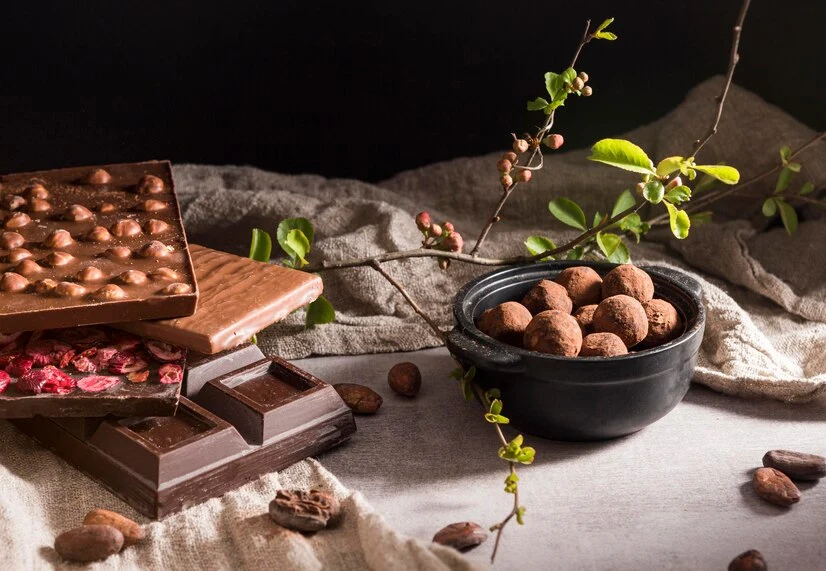
Tips for Picking Chokos with the Best Texture and Flavor
- To ensure your Chokos have the best texture and flavor, keep the following tips in mind:
- Opt for Chokos with a slight shine on their skin, indicating freshness.
- Chokos with a pale green color tend to be more tender and have a milder flavor compared to darker green ones.
- If possible, choose Chokos that still have their stems attached. This indicates that they were recently harvested and are likely to be fresher.
Cleaning and Peeling Choko
Preparing Choko for Culinary Excellence: Cleaning, Peeling, and Seed Removal
Now that you have selected the perfect Chokos for your recipes, it’s time to dive into the preparation process. In this section, we will provide you with a step-by-step guide on how to clean and peel choko, ensuring that you can effortlessly incorporate this versatile ingredient into your culinary creations.
Step-by-Step Guide for Cleaning Choko
Cleaning choko is an essential step to remove any dirt or residue that may be present on the skin. Follow these simple steps:
Rinse: Start by rinsing the choko under cool running water to remove any loose dirt or debris.
Scrub: Use a vegetable brush or a clean sponge to gently scrub the skin of the choko, paying attention to any crevices or rough areas.
Pat Dry: Once the choko is clean, pat it dry with a clean kitchen towel or paper towel. It’s now ready for the peeling process.
Proper Techniques for Peeling Choko Skin
Peeling the choko is the next step in preparing it for cooking. Here’s a technique to help you peel choko easily:
Slice: With a sharp knife, carefully slice off both ends of the choko.
Score the Skin: Make shallow lengthwise cuts along the skin of the choko, creating vertical lines.
Peel: Using your fingers or a vegetable peeler, gently peel the skin away, following the scored lines. Repeat this process until all the skin is removed.
Rinse Again: Once the choko is peeled, rinse it under cool water to remove any lingering skin particles.
Removing the Seed and Preparing Choko for Cooking
After peeling, it’s essential to remove the seed from the choko before using it in your recipes. Here’s how you can do it:
Cut: With a sharp knife, carefully cut the choko in half lengthwise.
Scoop: Use a spoon or a melon baller to scoop out the seed and the inner fibrous portion of the choko. Discard the seeds and fiber.
Further Preparation: Depending on your recipe’s requirements, you can proceed to slice, dice, or cube the choko as needed.
Delicious Choko Recipes
Unleash Your Culinary Creativity: Mouthwatering Choko Recipes
Now comes the exciting part – exploring the world of choko recipes that will tantalize your taste buds and leave you craving for more. From stir-fries to soups, choko can be incorporated into a wide range of dishes. In this section, we will delve into one delectable choko recipe that will surely elevate your dining experience.
Choko Stir-Fry with Garlic and Ginger
Indulge in the Flavors of the East: Choko Stir-Fry with a Twist
If you’re looking for a quick and flavorful dish to showcase the versatility of choko recipes, this stir-fry with garlic and ginger is the perfect choice. The combination of savory choko, aromatic garlic, and zesty ginger creates a symphony of flavors that will leave you craving for more. Here’s how you can bring this delightful dish to life:
Ingredients Required for the Stir-Fry
- 2 medium-sized Chokos, peeled, seeded, and sliced into thin strips
- 3 cloves of garlic, minced
- 1 tablespoon fresh ginger, grated
- 2 tablespoons soy sauce
- 1 tablespoon oyster sauce
- 1 tablespoon sesame oil
- 1 tablespoon vegetable oil
Optional: sliced green onions and sesame seeds for garnish
Detailed Instructions for Preparing the Dish
- Heat the vegetable oil in a large pan or wok over medium-high heat.
- Add the minced garlic and grated ginger to the pan, stirring constantly for about 1 minute or until fragrant.
- Add the sliced choko to the pan and stir-fry for 3-4 minutes, or until the choko is slightly tender but still crisp.
- In a small bowl, whisk together the soy sauce and oyster sauce. Pour the sauce mixture over the choko in the pan and toss to coat evenly.
- Continue to stir-fry for an additional 2-3 minutes, or until the choko is cooked to your desired level of tenderness.
- Drizzle the sesame oil over the stir-fry and give it a final toss to incorporate the flavors.
- Remove the pan from heat and garnish with sliced green onions and sesame seeds, if desired.
- Serve the choko stir-fry as a standalone dish or as a flavorful side to complement your favorite protein or grain.
Tips for Achieving the Perfect Balance of Flavors
- Adjust the amount of garlic and ginger according to your preference. If you love bold flavors, feel free to add more. For a milder taste, reduce the quantities slightly.
- For an extra touch of heat, add a pinch of red pepper flakes or a splash of sriracha sauce to the stir-fry.
- Be cautious with the cooking time to retain the crispness of the choko. Overcooking can result in a mushy texture.
Serving Suggestions for the Stir-Fry Dish
- Serve the choko stir-fry over steamed rice or noodles for a satisfying and complete meal.
- Pair it with grilled chicken or shrimp to create a protein-packed dinner.
- Add a sprinkle of toasted sesame seeds on top for an extra crunch and nutty flavor.
Choko and Chicken Soup
Comfort in a Bowl: Choko and Chicken Soup
When it comes to hearty and comforting meals, it’s hard to beat a steaming bowl of soup. This choko and chicken soup combines the goodness of tender choko with savory chicken to create a comforting and nourishing dish. Here’s how you can prepare this flavorful soup:
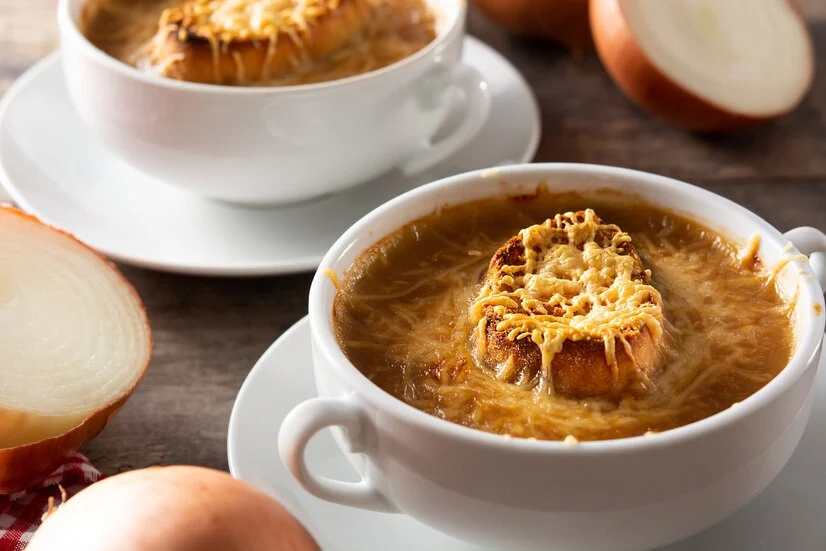
List of Ingredients Necessary for the Soup
- 2 Chokos, peeled, seeded, and diced
- 1 boneless, skinless chicken breast, cut into bite-sized pieces
- 1 onion, chopped
- 2 cloves of garlic, minced
- 2 carrots, peeled and diced
- 2 celery stalks, diced
- 4 cups chicken broth
- 1 teaspoon dried thyme
- 1 bay leaf
- Salt and pepper to taste
- Fresh parsley, chopped (for garnish)
Step-by-Step Procedure for Making the Soup
- In a large pot, heat a tablespoon of olive oil over medium heat.
- Add the chopped onion and minced garlic, sautéing until the onion becomes translucent and fragrant.
- Add the diced chicken breast to the pot, cooking until it’s no longer pink and lightly browned.
- Stir in the diced choko, carrots, and celery, allowing them to cook for a few minutes until slightly softened.
- Pour in the chicken broth, dried thyme, and bay leaf. Season with salt and pepper to taste.
- Bring the soup to a boil, then reduce the heat to low, cover, and let it simmer for about 20-25 minutes or until the vegetables are tender.
- Remove the bay leaf from the pot and discard.
- Serve the choko and chicken soup hot, garnished with fresh parsley for a burst of freshness.
Adding Spices and Herbs for Enhanced Taste
To take this choko and chicken soup to the next level, consider adding additional spices and herbs to enhance the flavors. Here are a few suggestions:
- Sprinkle a pinch of paprika for a subtle smoky undertone.
- Add a dash of turmeric for its vibrant color and earthy flavor.
- Stir in a teaspoon of freshly grated ginger for a hint of warmth and complexity.
Serving Recommendations for the Flavorful Soup
- Serve the choko and chicken soup with a side of crusty bread or warm rolls for a complete meal.
- Sprinkle some grated Parmesan cheese on top for an added savory kick.
- Pair it with a fresh green salad or steamed vegetables to add a refreshing element to your meal.
Choko Tart with Almond Crust
Indulgent Delight: Choko Tart with a Crunchy Almond Crust
If you have a sweet tooth and are looking to showcase the unique flavors of choko in a dessert, this choko tart with almond crust is a must-try. The combination of the slightly sweet choko filling and the nutty almond crust creates a heavenly treat that will satisfy your cravings. Here’s how you can create this delightful dessert:
Ingredients for the Tart and Almond Crust
For the Almond Crust:
- 1 1/2 cups almond flour
- 1/2 cup unsalted butter, melted
- 2 tablespoons granulated sugar
- 1/4 teaspoon salt
For the Choko Filling:
- 2 Chokos, peeled, seeded, and grated
- 1/2 cup granulated sugar
- 1/4 cup all-purpose flour
- 2 large eggs
- 1 teaspoon vanilla extract
- 1/2 teaspoon ground cinnamon
Baking Instructions and Recommended Temperature
- Preheat your oven to 350°F (175°C).
- In a mixing bowl, combine the almond flour, melted butter, sugar, and salt for the almond crust. Mix until well combined and press the mixture evenly into the bottom and sides of a tart pan.
- Place the tart crust in the preheated oven and bake for 10-12 minutes or until golden brown. Remove from the oven and set aside to cool.
- In another bowl, whisk together the grated choko, sugar, flour, eggs, vanilla extract, and ground cinnamon for the choko filling. Make sure the mixture is well combined and smooth.
- Pour the choko filling into the cooled almond crust.
- Place the tart back in the oven and bake for an additional 25-30 minutes, or until the filling is set and the top is lightly golden.
- Once baked, remove the tart from the oven and allow it to cool completely before decorating and serving.
Decorating the Tart with Choko Slices
To enhance the visual appeal of your choko tart, consider decorating it with choko slices. Here’s how you can do it:
- Thinly slice a choko using a mandolin or a sharp knife.
- Arrange the choko slices on top of the cooled tart in a decorative pattern.
- Optional: Brush the choko slices with a light glaze made of honey or apricot jam for a glossy finish.
Serving Ideas and Accompaniments for the Dessert
- Serve the choko tart as is for a simple and elegant dessert.
- Pair it with a dollop of whipped cream or a scoop of vanilla ice cream for a touch of indulgence.
- Sprinkle some toasted almond slices on top of the tart for an extra crunch and nutty flavor.
Conclusion
Choko recipes offer a delightful and versatile way to incorporate this unique ingredient into your culinary repertoire. From comforting soups to indulgent desserts, Choko adds a distinct flavor and texture that can elevate any dish. Whether you’re a seasoned chef or a beginner in the kitchen, exploring the world of choko recipes will unlock a world of delicious possibilities. So, grab some Chokos, unleash your creativity, and embark on a culinary adventure that will leave your taste buds craving for more.
Frequently Asked Questions
Can I substitute Chokos with another vegetable in choko recipes?
While Chokos have a unique flavor and texture, you can experiment with substitutions like zucchini or squash for a similar result.
Are Chokos good for weight loss?
Yes, Chokos are low in calories and high in fiber, making them a nutritious option for those aiming to shed some pounds.
Can I freeze Choko for later use?
Absolutely! Chokos can be peeled, diced, and stored in the freezer for future use in soups, stir-fries, and more.
